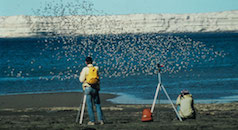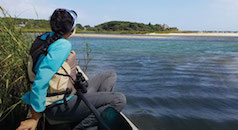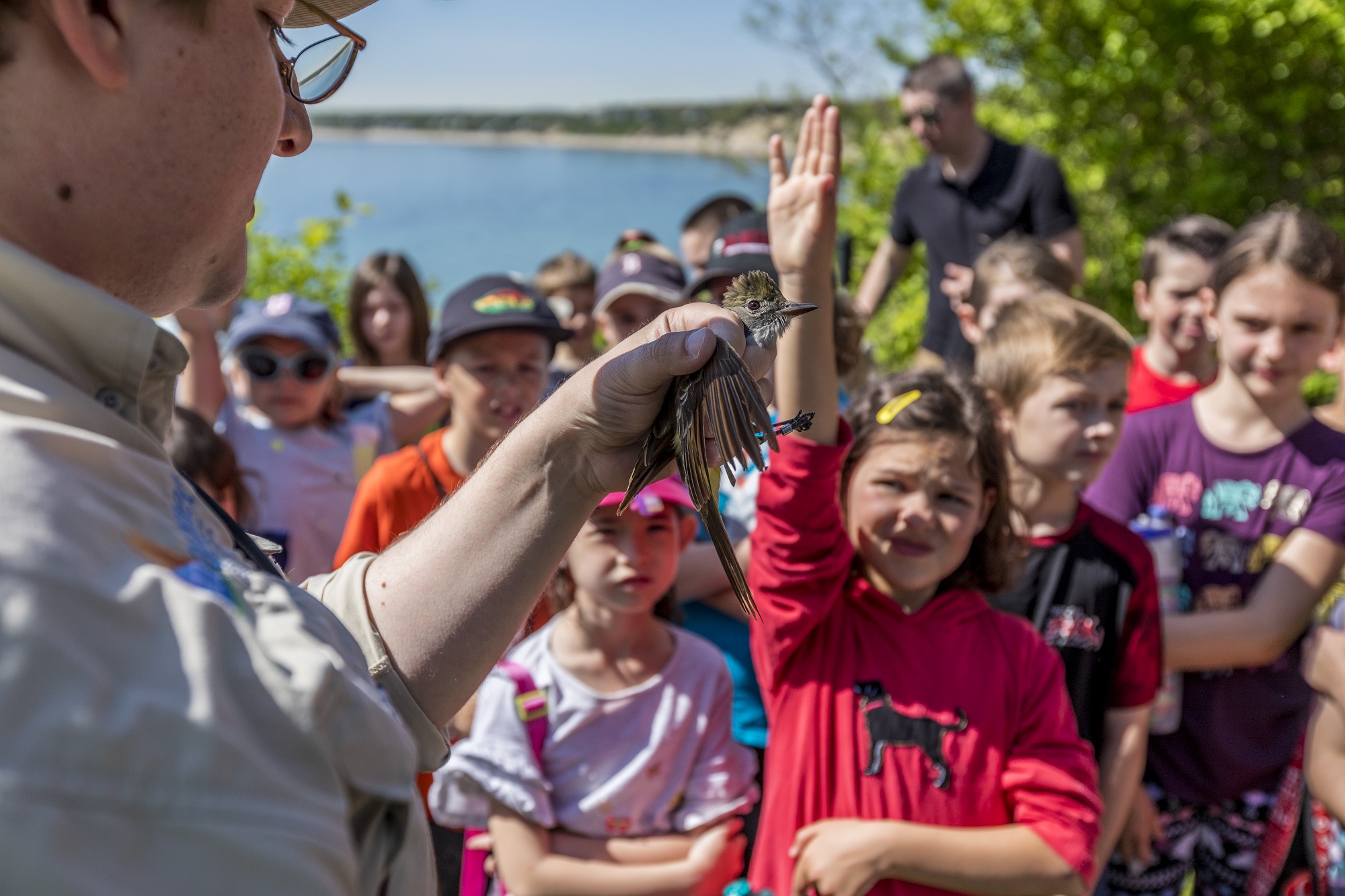Search Results

Central American coastlines take center stage in Atlantic shorebird conservation efforts
By Julia Salazar The Caribbean coastlines of Central America are poised to become the next key conservation priority for the Atlantic Flyway Shorebird Initiative (AFSI), an effort to contribute to the management and protection of shorebird habitat led by the US Fish and Wildlife Service (USFWS). As other stopover sites for birds migrating between the Arctic to South America decline due to human and climate-related impacts, Caribbean coastlines in Central America can provide alternative feeding and resting spots along these birds’ multi-continental journeys. This effort, which kicked off in February 2022, is led by Western Hemisphere Shorebird Reserve Network (WHSRN)'s executive office (housed within Manomet’s Flyways team) and is supported by an advisory committee of regional shorebird experts and the USFWS. By...
Why New England’s coastlines are especially vulnerable to climate change
By Emily Renaud All of Earth’s natural systems will be impacted by our rapidly warming climate, but some habitats–the natural homes where animals, plants, and other organisms live–are more vulnerable to the effects of climate change than others. A recent climate vulnerability assessment, published in PLOS ONE, is the first report of its kind aimed at determining which habitats in the Northeast are most likely to feel the worst effects. Take, for instance, the Gulf of Maine. It’s a highly diverse and productive marine ecosystem, with coastal waters teeming with biodiversity, but it's warming faster than 99 percent of the world's oceans. The Gulf of Maine is getting hotter, quickly, and that's changing the population dynamics of the region's species...
Fall Field Guide for the Gulf of Maine
Fall is a time of many changes; on land, it’s hard to ignore the changing color of the leaves and cooling temperatures. While the changes happening underwater may not be as visible, if you look close enough, you’ll see that marine organisms go through their own transitions, too. Several species are currently preparing for the harsh winter conditions of the Gulf of Maine and the changing seasonal cues trigger many different types of behavior. If you find yourself in intertidal and shallow subtidal areas of the coast of New England this season, see if you can spot examples of these seasonal marine phenomena. For most shellfish, the growing season is during the warmer months, when there is more food available...
New fish on the block: The expanding range of black sea bass in the Gulf of Maine
The Gulf of Maine is one of the world’s most productive marine ecosystems—the heart of New England’s fishing heritage for over 400 years. Today, the Gulf is one of the fastest warming bodies of water on the planet, leading to big changes in the marine environment and a changing mix of species that survive and thrive. Black Sea Bass – a temperate reef fish once a rarity in these waters – are becoming increasingly abundant. Join Dr. Marissa McMahan, Director of Fisheries, to learn how we are studying sea bass in its newly expanded habitat in order to understand its ecological impacts, as well as support the development of a black sea bass fishery in the Gulf of Maine.
Guide to Applying Science and Management Insights and Human Behavior Change Strategies to Address Beach Walking and Dog Disturbance Along the Atlantic Flyway
Despite many efforts to reduce disturbance, activities that are potentially disturbing to shorebirds are widely present across the United States and Canada portion of the Atlantic Flyway. To mitigate disturbance from two common human disturbances -- dog walking and beach walking -- Virginia Tech, Audubon, Manomet and other AFSI partners developed a new Guide to Applying Science and Management Insights and Human Behavior Change Strategies to Address Beach Walking and Dog Disturbance Along the Atlantic Flyway. The project was funded by National Fish and Wildlife Foundation and the United States Fish and Wildlife Service.
Protecting wintering sites for shorebirds in Chile
The island of Chiloé, in southern Chile, is one of the most important sites for Hudsonian Godwit (Limosa haemastica) and Whimbrel (Numenius phaeopus) in the Western Hemisphere. The eastern wetlands of the island are home to 21,000 Godwits, comprising 27% of the world population and 99% of the Pacific coast population, in addition to a significant proportion of the Pacific coast population of Whimbrel. Both species are classified as "high concern" in the US Shorebird Conservation Plan. Due to its importance for "wintering" populations of Hudsonian Godwit and Whimbrel, Chiloé was selected by the David and Lucile Packard Foundation as a priority site for its portfolio of shorebird conservation projects. Thanks to this support, in 2010, a coalition of local,...
A new season of banding and education – Manomet’s 56th fall banding season
It may not feel like fall in Massachusetts yet, but that won’t stop migratory birds from their long, southbound journeys to their wintering grounds! Manomet’s banding lab opened for the 56th fall season on August 15. We also welcomed our talented banding staff: Megan Gray, a Manomet banding veteran and Rhode Island native with several years of research experience; Sarah Duff, another Manomet veteran, world traveler, and artist from New Jersey; Amy Hogan, a Michigan native returning for her second season at Manomet after spending the summer at our Plymouth campus working on our open science initiative; Lauren Michael, coming to us from Maryland her first season at Manomet after spending several years in various field positions throughout North America....
Whimbrels in the Arctic
Shiloh Schulte, Manomet’s senior shorebird scientist, recently spent four weeks in the Arctic National Wildlife Refuge, continuing several studies delayed by COVID-19. Working closely with the U.S Fish and Wildlife Service, Shiloh deployed GPS tracking tags on Whimbrel, American Golden-Plovers, Pectoral Sandpipers, and other species as part of an ongoing study of local movement patterns and long-distance migration pathways and stopover sites. In addition to the tracking work, Shiloh collaborated to develop methods for remote monitoring of shorebird nests and mentored new USFWS technicians and volunteers. Shiloh recently shared his experiences on Alaska's Katakturuk River tagging Whimbrels to study local movement patterns and long-distance migration pathways and stopover sites. I have been lying flat in the sedge, hiding behind a...
How is climate change impacting food availability for shorebirds?
One of the big questions we are addressing through our research is determining what threats limit shorebird populations. The work of the Arctic Shorebird Demographics Network (ASDN), which included 16 partner organizations, has substantially increased our ability to address a wide variety of science and conservation goals. We co-led the network of partners along with Rick Lanctot from the US Fish and Wildlife Service and Brett Sandercock from Kansas State University. Through this partnership and collaboration, the ASDN has examined species and topics at a very large scale (e.g., Russia to western Canada). The ASDN team has collected data on migratory connectivity, as well as adult survival, productivity, and other demographic parameters at various stages of a shorebird’s annual cycle....
Shifting Tides
For nearly a decade, Anne Hayden’s work at Manomet has focused on restoring marine habitats and rebuilding sustainable fisheries. Throughout her career, Anne’s work has focused on planning and management for Maine’s watersheds, building engaging and inspiring educational programs and courses, restoring marine habitats, and rebuilding sustainable fisheries. Through social and natural science, she has worked to understand the dynamics of the marine ecosystem and align economic incentives with environmental stewardship. In addition, she has worked to restore sustainable and resilient fisheries in the Gulf of Maine and strengthen adaptive co-management to promote healthy marine ecosystems and thriving coastal communities. At the end of June 2021, Anne will be retiring from Manomet, leaving behind a long list of accomplishments and...



